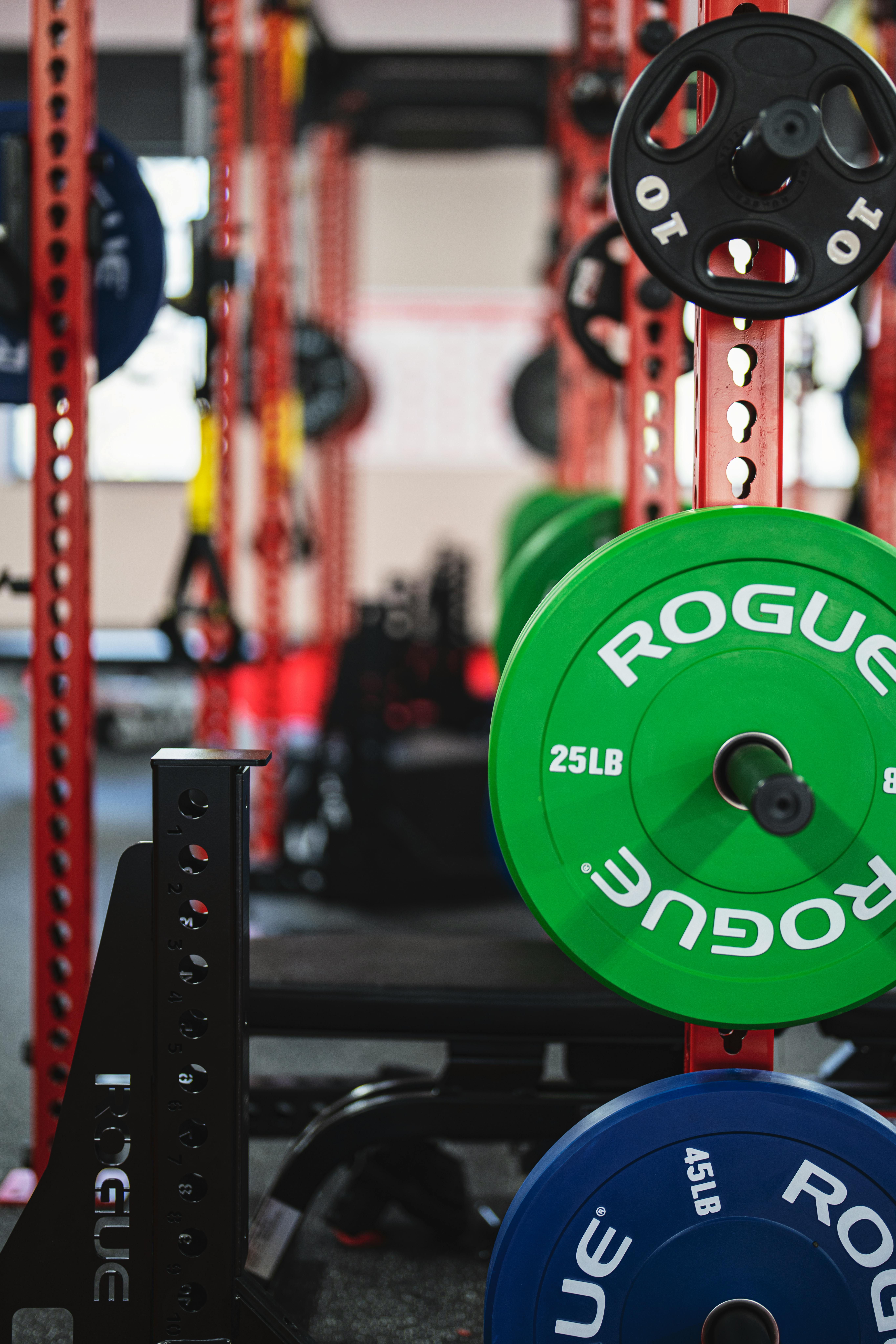Practical Guide to Negatives Bankdrücken for Superior Muscle Development in 2025
Negatives Bankdrücken is a highly effective technique in fitness training, offering superior muscle development, particularly for the chest muscles. This article delves into the practical applications of this method within a broader training regimen, focusing on how to correctly perform negatives bankdrücken, optimize your workout plan, and track progress effectively. By understanding the principles of this technique, athletes can maximize their strength gains, improve their overall fitness, and reduce injury risks.
Incorporating negatives bankdrücken into your strength training not only enhances muscle activation but also fosters a deeper understanding of body mechanics and performance enhancement. Throughout this guide, we will explore the techniques, benefits, and essential components of a successful training plan that includes this powerful exercise.
As a preview, you will learn effective strategies for executing negatives bankdrücken, discover insights on optimizing your performance with proper techniques, and find tips on supplementary training for long-term success. Let’s dive into the world of aggressive muscle-building techniques!

Essential Techniques for Negatives Bankdrücken
Building on the fundamentals discussed previously, knowing how to perform negatives bankdrücken is crucial for maximizing benefits. Negatives, or eccentric movements, engage your muscles differently, allowing for greater hypertrophy and strength gains. This section outlines proper form and other critical elements for execution.
Understanding the Negatives Concept
Negatives bankdrücken focuses on the lowering phase of the lift, maximizing muscle time under tension. During this phase, the muscles are activated more intensely than in the standard contraction. Eccentric training is vital for muscle hypertrophy and can profoundly impact strength development. Athletes experience enhanced stability and power through controlled descents.
Setting Up for Success
Before attempting negatives bankdrücken, ensure your setup aligns with safety and effectiveness. Utilize a spotter when necessary, especially if lifting heavy loads. The correct bench height and barbell placement will prevent injury and facilitate an optimal range of motion. Establish comfort with lighter weights before progressing to heavier loads to build proficiency.
Performing the Exercise Correctly
To execute negatives bankdrücken effectively, lie flat on a bench with the feet firmly planted. Grasp the barbell with hands slightly wider than shoulder-width apart. Lower the bar slowly and deliberately, engaging your core and maintaining control throughout the descent. A four-to-six-second lowering phase is ideal, followed by a reset and repetition. Focus on muscle engagement that aligns with your body’s mechanics.
Common Mistakes to Avoid
Many practitioners overlook aspects that can lead to poor performance or injuries. Common errors include rushing the lowering phase or using weights that are too heavy to control. Ensure you maintain a stable body position and avoid arching your back, which can lead to spine issues. Additionally, neglecting warm-up routines increases the risk of strains and injuries.

Incorporating Negatives into Your Training Plan
With these techniques established, integrating negatives bankdrücken into your training regimen will provide additional challenges and rewards. This section will focus on how to formulate an effective training plan featuring this technique for optimal muscle development.
Designing a Balanced Workout Schedule
A successful training plan incorporates various exercises that target all muscle groups, facilitating balanced development. Negatives bankdrücken should complement your existing exercises like bench presses and shoulder presses. Including compound movements will enhance body strength and muscle activation overall.
Defining Your Goals and Progression
Identifying your fitness goals and setting targets are foundational elements of an effective training plan. Determine whether your focus will be on increasing maximum strength, muscle endurance, or hypertrophy. Regularly evaluate your training intensity and load, progressively increasing these parameters to continue challenging your body.
Tracking Your Progress and Adjustments
Maintaining precise records of your workouts, including weights and repetitions for negatives bankdrücken, will help assess your advancement. Adjust your training frequency based on how your body responds to workloads. Monitoring % One-Rep Max (1RM) can be an effective way to evaluate strength improvements and potential modifications in your regimen.
Complementary Exercises for Optimal Results
Connected to the prior section on integrating negatives bankdrücken, it’s essential to consider complementary exercises that can enhance overall performance. This section will outline effective routines that work alongside this technique.
Incorporating Upper Body Movements
Exercises like overhead presses and incline bench press provide significant benefits to shoulder and chest muscles while balancing the progression of the negatives bankdrücken. Such variations target stabilizing muscles and promote functional strength. They should be included in your split routines to maximize upper body gains.
Cross-Training for Balanced Development
Integrate cross-training moves, such as push-ups, bodyweight dips, or resistance band variations, to enhance strength and dynamics of your primary lifts. These variations build shoulder stability and strength while preventing imbalances. Engage in supplementary training to ensure holistic development of the muscles.
Cardiovascular Training for Endurance
Complementing strength-focused workouts with cardiovascular training is vital. Activities like HIIT or steady-state cardio are essential for improving cardiovascular fitness and recovery processes. They aid in muscle recovery and performance enhancement, bridging your strength regime with mobility and endurance.
Safety and Injury Prevention Techniques
Building on injury prevention highlighted earlier, being proactive in safeguarding your training is paramount. Practicing safe techniques is essential for long-term success and wellness.
Warm-Up Routines to Protect Against Injuries
Engaging in dynamic warm-up exercises enhances blood flow and prepares your muscles for rigorous training. Movements like arm circles, shoulder dislocations with a resistance band, and light weightlifting can prepare your upper body for negatives bankdrücken, minimizing injury risks.
Understanding Body Mechanics and Correct Posture
During any exercise, maintaining a neutral spine and proper alignment is crucial. Take time to understand your body mechanics, focusing on shoulder stabilization and core engagement. Adequate flexibility training should also be included in your regimen to enhance mobility and range of motion.
Utilizing Correct Resistance and Control Options
Establishing safety protocols while lifting—that includes knowing your limits—is crucial. Adapt weights according to your strength levels as you progress in training. Employing controlled descents on the negatives bankdrücken prevents strain on the muscles and safe workout execution.
FAQs on Negatives Bankdrücken
In this section, we will address some frequently asked questions regarding negatives bankdrücken to provide further clarity:
What are the primary benefits of negatives bankdrücken?
Negatives bankdrücken enhances muscle activation, increases strength and hypertrophy, and helps overcome plateaus in traditional bench pressing. They also develop better control and stability during lifts.
Can beginners perform negatives bankdrücken?
Beginners should start with lighter weights under supervision. Mastering the correct technique is essential to prevent injuries. It’s advisable to gain experience with standard bench pressing before including negatives.
How frequently should I include negatives bankdrücken in my training?
Negatives can be performed once or twice a week, depending on your goals and overall regimen. Adequate recovery must be incorporated between workouts to optimize results.
Are there any specific dietary recommendations for maximizing training results?
Maintaining proper nutrition that includes adequate protein intake is vital for muscle recovery and growth. Incorporate whole foods, and consider supplements that align with your fitness goals for best results.
What other exercises can complement negatives bankdrücken?
Incorporating exercises like flyes, rows, and shoulder presses will strengthen synergistic muscles and enhance overall upper body strength. Powerlifting variations can also be beneficial.
